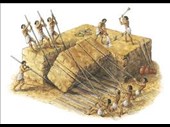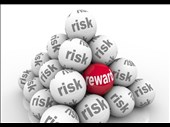Solution for: Buy Nothing Day
Answer Table
| 1. Vancouver | 4. Thanksgiving |
| 2. fourth | 5. consumer |
| 3. Black Friday |
Exam Review
Buy Nothing Day

“Buy Nothing Day” began in the 1990s in Vancouver, Canada. It was the idea of a man named Kalle Lasn and his organization Adbusters. Before starting Adbusters, Lasn worked for many years in advertising. He helped companies research what influenced people to buy things. But Lasn began to question the ways advertisers influenced people to buy things. He also questioned the culture of buying. Was it good to make people feel like they should always want more and more? “Buy Nothing Day” criticizes this culture of consumerism.
Lasn recognizes that people need to consume things. They have to buys things to eat, live and even enjoy life. But Lasn believes that many companies encourage people to consume far more than is necessary. Advertising this way helps companies make money. But Lasn believes it hurts people and culture.
So Lasn decided to use advertising against companies. Adbusters tries to help people understand some of the false values and ideas behind advertising. The main value Adbusters fights is the idea, "You must consume more to be happy." And one way they do this is by encouraging people to celebrate “Buy Nothing Day!”
“Buy Nothing Day” is celebrated on the fourth Friday of every November. Adbusters chose this day for a very important reason. It is the biggest buying day of the year. Advertisers call this day Black Friday.
Black Friday is particularly famous in the United States. It is the day after the country’s Thanksgiving holiday. On Thanksgiving, people in the United States gather with family and friends to eat a meal and give thanks. In recent years, stores began to reduce their prices the day after Thanksgiving. They wanted to encourage people to start buying gifts for the Christmas holiday in December.
However, in recent years, Black Friday has become famous for something else: greed and violence. On Black Friday stores offer extremely reduced prices. But they only offer limited amounts of product. So, people come early in the morning - or even the night before - to stand in lines outside stores. Sometimes, people push or fight to be first into the store. Some people have even died in Black Friday riots!
“Buy Nothing Day” hopes to end the greed and violence of Black Friday. But its message is bigger than just Black Friday. “Buy Nothing Day” is for people in the United States and around the world. Many other countries also have growing problems with too much consumption. Sixty-two different countries, from Germany to Japan, already celebrate “Buy Nothing Day”. And the message is the same everywhere - buying too much hurts people, culture and the planet.
Buy Nothing Day is a simple idea. It fights consumer culture by asking us to stop buying for a day. Anyone can do it if they spend a day without buying. For some people, “Buy Nothing Day” is a protest. For other people, it is a party. Some groups go to stores and encourage other people not to buy things. Other people gather together to make Christmas gifts - instead of buying them. And some people use the day to create works of art that protest against consumer messages. Often, people celebrate by enjoying the free gift of nature. They go for walks, or watch the sun set together. The only rule of “Buy Nothing Day” is not to buy anything!
Some people question if “Buy Nothing Day” can really change culture. It is only one day. And telling people not to do something often does not work! Other people say that consumers should not just buy less, but they should buy better. These people encourage consumers to buy things that are made in ways that do not hurt people or the environment.
But “Buy Nothing Day” does get people thinking about the negative effects of buying too much. A lot of people have had deep learning experiences when they tried celebrating “Buy Nothing Day”. It was like giving up an addiction to drugs.
Buying more and more things can be like an addiction. Often, the more people buy things, the more things they want. People are happier and more satisfied when they spend money on experiences instead of things. Satisfaction over purchases decreases over time. A new car does not stay new for very long. But a satisfying experience often becomes more positive over time as we remember it.
Questions 1-5
Write NO MORE THAN TWO WORDS from the passage for each answer.
Buy Nothing Day
“Buy Nothing Day” started in the 1990s in 1 , Canada. It is held on the 2 Friday of every November. It is the biggest buying day of the year. Advertisers call this day 3 .
It is the day after the country’s 4 holiday. Buy Nothing Day is a simple idea that fights 5 culture by asking us to stop buying for a day.
1. Answer: Vancouver
2. Answer: fourth
3. Answer: Black Friday
4. Answer: Thanksgiving
5. Answer: consumer
Other Tests
-
Total questions: 13
- 7- TRUE-FALSE-NOT GIVEN
- 6- Summary, form completion
-
-
Total questions: 8
- 8- Matching Information
-
Total questions: 13
- 6- Matching Headings
- 3- Matching Information
- 4- Sentence Completion
-
Total questions: 14
- 7- TRUE-FALSE-NOT GIVEN
- 3- Matching Information
- 4- Summary, form completion
-
Total questions: 14
- 4- YES-NO-NOT GIVEN
- 6- Matching Headings
- 4- Matching Information











